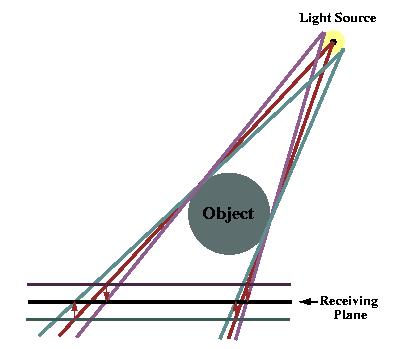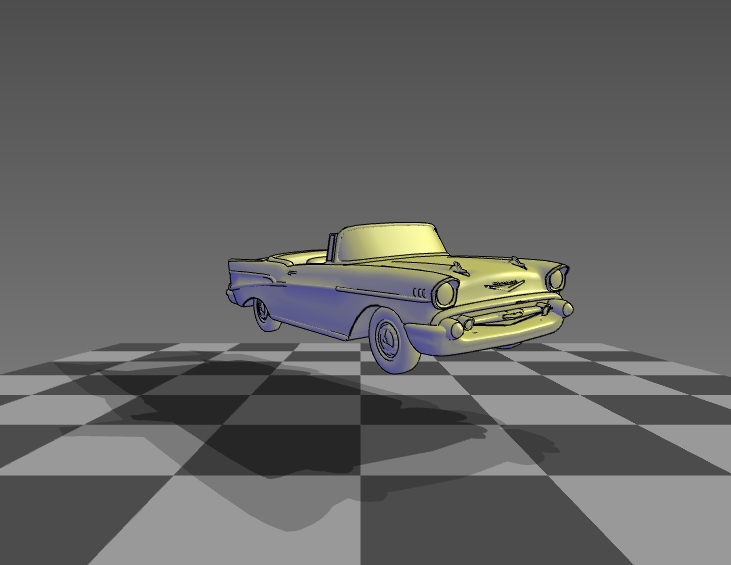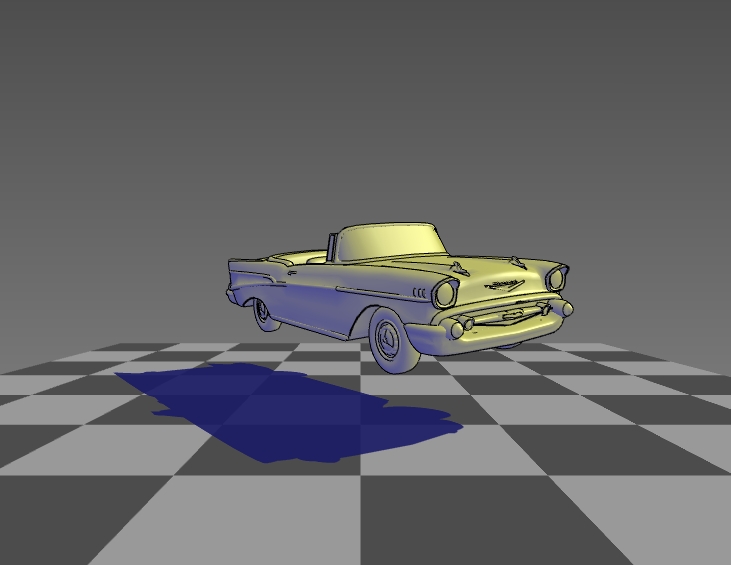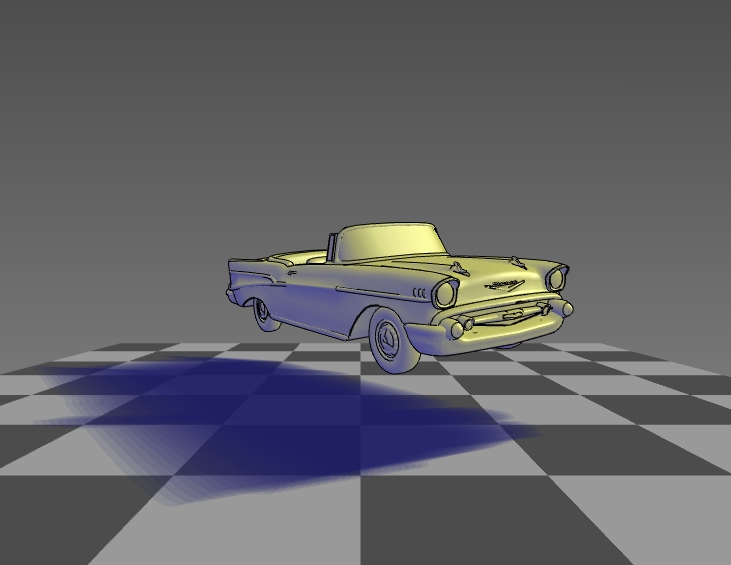


Next: Future Work and Conclusion
Up: Implementation
Previous: Metal Shading
 |
| Figure 11: |
| Drawing the shadow of a sphere
with a spherical light source directly onto a ground plane directly
below it, traditionally each sample will render an ellipse. To get an
accurate representation of the penumbra, this surface of the spherical
light source needs to be sampled in 2 dimensions. With our method,
each shadow is a concentric circle, requiring less samples to get the
same results. |
 a) Hard penumbra and
hard umbra. a) Hard penumbra and
hard umbra.
 b) Single hard, colored shadow. b) Single hard, colored shadow.
 c) Colored soft shadow c) Colored soft shadow |
| Figure 12:
Shadows provide valuable information about three dimensional
structure, especially the spatial layout of the scene |
|
We draw shadows in one of three modes: a shadow with a hard umbra and
a hard penumbra, a single hard shadow, and a soft shadow, as shown in
Figure 12. Both of the later two modes approximate
a spherical light source at a fixed distance from the center of the
model in the direction of the light source used for shading.
The simplest and fastest method to
draw simple shadows is to
explicitly draw an umbra and penumbra. We draw two hard shadows,
one from the center of the spherical light source back in the
direction used for shading, and the other forward.
Soft shadows are problematic to render both accurately and efficiently, so
we use an approximation to gain speed. Instead of using the
conventional method to simulate an area light source, i.e., sampling
the area light source and accumulating the point approximations, we
project multiple shadows from the center of the approximation sampling
a 1D direction, the ground plane's normal. This is done by projecting
the same shadow onto a stack of planes, then translating the shadows
to the ground plane and accumulating them, as shown in
Figure 11.
Note that with this method, each ``sample'' is a
perspective remapping of the first, intersected on a different plane.
We could render a single shadow, copy it into texture memory and then
remap it correctly to accumulate the other samples. This is much
faster than projecting multiple jittered samples since there is a
lower depth complexity for rasterization and a much lower burden on
the transformation if the texture mapping method were used.
This method assumes that the silhouette from different points on the
spherical light source is the same, i.e., the projection is the same.
The planes coming out of the receiver will not correctly model
contact. However, you can render only the lower planes if contact
occurs resulting in a less realistic shadow, but one without
distracting spillover.



Next: Future Work and Conclusion
Up: Implementation
Previous: Metal Shading

 a) Hard penumbra and
hard umbra.
a) Hard penumbra and
hard umbra.
 b) Single hard, colored shadow.
b) Single hard, colored shadow.
 c) Colored soft shadow
c) Colored soft shadow